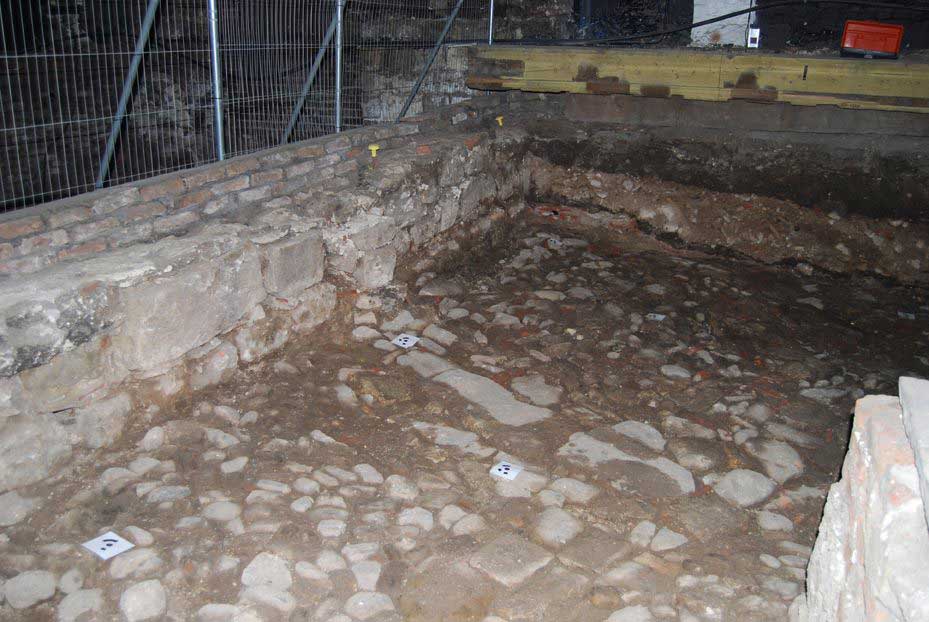
And it’s a real one, not a set created by the theatre’s talented designers.
The under-stage street was uncovered this week as part of the work to redevelop the building. Experts from the York Archaeological Trust knew it was there, so it was an exciting moment when the road was exposed.
It dates from the post-medieval period and the theatre was built over it in the 1700s. The cobbles and stone used in the street’s surface are also remains from the 12th century St Leonards Hospice.
Wells, cigs and pipes

This is only the latest discovery by the archaeologists who have joined builders from William Birch as the £4.1 million renovation moved into its third week.
Another historic feature is the well underneath the stage. Actor Blair Plant told YorkMix how he’d be lowered down into the well and splash around in the water when he worked as part of the theatre’s stage crew.
Research has now confirmed that the well dates from medieval times, as does the stone block wall and gateway at the back of the stage.
Before the smoking ban, theatre goers used to like nothing more than to light up as they watched a performance. Early to mid-20th century cigarette packets have been recovered from directly under the stage.
Small clay pipe fragments have also been discovered in a cobble layer.
Ben Reeves from York Archaeological Trust said:
Theatre Royal timeline
| 1734 | Thomas Keregan and his wife establish the theatre on a converted tennis court in Minster Yard |
| 1744 | His wife builds what was then known as the ‘New Theatre’ on the present site |
| 1769 | Tate Wilkinson pays £500 for a Royal Patent, and, accordingly, it was renamed the Theatre Royal |
